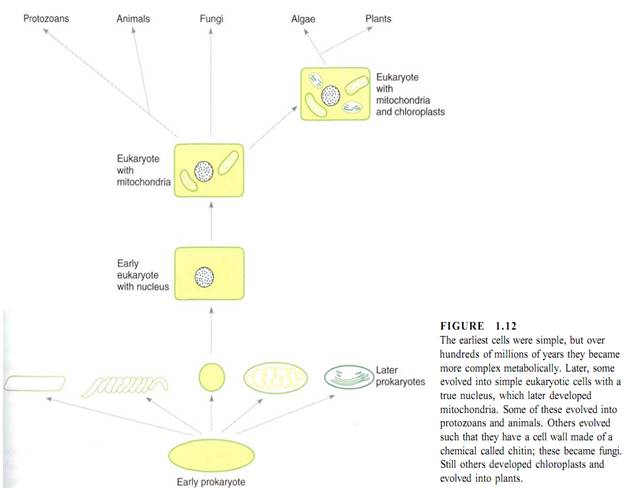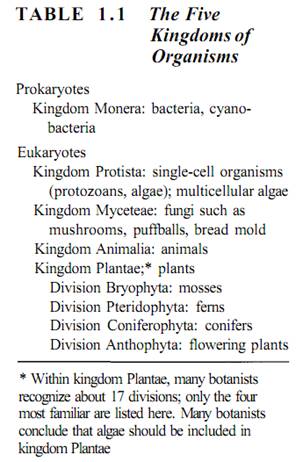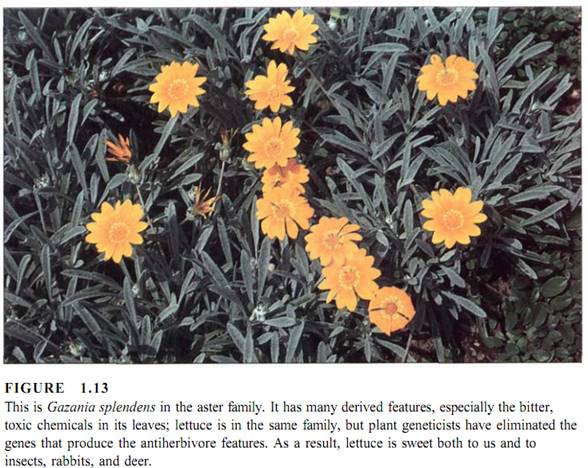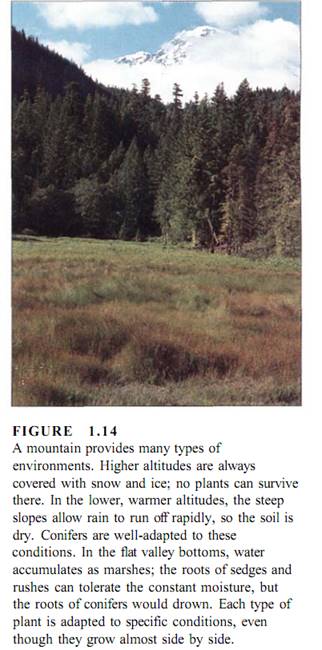

النبات

مواضيع عامة في علم النبات

الجذور - السيقان - الأوراق

النباتات الوعائية واللاوعائية

البذور (مغطاة البذور - عاريات البذور)

الطحالب

النباتات الطبية


الحيوان

مواضيع عامة في علم الحيوان

علم التشريح

التنوع الإحيائي

البايلوجيا الخلوية


الأحياء المجهرية

البكتيريا

الفطريات

الطفيليات

الفايروسات


علم الأمراض

الاورام

الامراض الوراثية

الامراض المناعية

الامراض المدارية

اضطرابات الدورة الدموية

مواضيع عامة في علم الامراض

الحشرات


التقانة الإحيائية

مواضيع عامة في التقانة الإحيائية


التقنية الحيوية المكروبية

التقنية الحيوية والميكروبات

الفعاليات الحيوية

وراثة الاحياء المجهرية

تصنيف الاحياء المجهرية

الاحياء المجهرية في الطبيعة

أيض الاجهاد

التقنية الحيوية والبيئة

التقنية الحيوية والطب

التقنية الحيوية والزراعة

التقنية الحيوية والصناعة

التقنية الحيوية والطاقة

البحار والطحالب الصغيرة

عزل البروتين

هندسة الجينات


التقنية الحياتية النانوية

مفاهيم التقنية الحيوية النانوية

التراكيب النانوية والمجاهر المستخدمة في رؤيتها

تصنيع وتخليق المواد النانوية

تطبيقات التقنية النانوية والحيوية النانوية

الرقائق والمتحسسات الحيوية

المصفوفات المجهرية وحاسوب الدنا

اللقاحات

البيئة والتلوث


علم الأجنة

اعضاء التكاثر وتشكل الاعراس

الاخصاب

التشطر

العصيبة وتشكل الجسيدات

تشكل اللواحق الجنينية

تكون المعيدة وظهور الطبقات الجنينية

مقدمة لعلم الاجنة


الأحياء الجزيئي

مواضيع عامة في الاحياء الجزيئي


علم وظائف الأعضاء


الغدد

مواضيع عامة في الغدد

الغدد الصم و هرموناتها

الجسم تحت السريري

الغدة النخامية

الغدة الكظرية

الغدة التناسلية

الغدة الدرقية والجار الدرقية

الغدة البنكرياسية

الغدة الصنوبرية

مواضيع عامة في علم وظائف الاعضاء

الخلية الحيوانية

الجهاز العصبي

أعضاء الحس

الجهاز العضلي

السوائل الجسمية

الجهاز الدوري والليمف

الجهاز التنفسي

الجهاز الهضمي

الجهاز البولي


المضادات الميكروبية

مواضيع عامة في المضادات الميكروبية

مضادات البكتيريا

مضادات الفطريات

مضادات الطفيليات

مضادات الفايروسات

علم الخلية

الوراثة

الأحياء العامة

المناعة

التحليلات المرضية

الكيمياء الحيوية

مواضيع متنوعة أخرى

الانزيمات
Origin and Evolution of Plants
المؤلف:
AN INTRODUCTION TO PLANT BIOLOGY-1998
المصدر:
JAMES D. MAUSETH
الجزء والصفحة:
16-10-2016
2587
Origin and Evolution of Plants
Life on Earth began about 3.5 billion years ago. At first, living organisms were simple, like present-day bacteria, in both their metabolism and structure. However, over thousands of millions of years cells gradually increased in complexity through evolution by natural selection. The process is easy to understand: As organisms reproduce, their offspring differ slightly from each other in their features they are not identical. Offspring with features that make them poorly adapted to the habitat probably do not grow well and reproduce poorly if they live long enough to become mature. Offspring with features that cause them to be well-adapted grow well and reproduce abundantly, passing on the beneficial features to their own offspring. This is called natural selection. New features come about periodically by mutations, and natural selection determines which new features are eliminated and which are passed on to future generations. Evolution by natural selection is a model consistent with observations of natural organisms, experiments, and theoretical considerations.
As early organisms became more complex, major advances occurred. One was the evolution of the type of photosynthesis that produces oxygen and carbohydrates. This photosynthesis is present in all green plants, but it first arose about 2.8 billion years ago in a bacterium-like organism called a cyanobacterium. Later, cell structure became more efficient as subcellular components evolved. These components, called organelles, are small, completely closed bags of membranes that give each organelle a unique structure and chemistry specialized to a specific function. Division of labor and specialization had come about.
A particularly significant evolutionary step occurred when DNA, the molecule that stores hereditary information, became located in its own organelle—the cell nucleus. Because this step was so important and occurred with so many other fundamental changes in cell metabolism, we classify all cells as prokaryotes if they do not have nuclei (bacteria and cyanobacteria) or as eukaryotes if they do have nuclei (all plants, animals, fungi, and algae; Table 1.1).
By the time nuclei became established, evolution had produced thousands of species of prokaryotes. The newly evolved eukaryotes also diversified. Some acquired an energy- transforming organelle, the mitochondrion, and some acquired chloroplasts, which carry out photosynthesis and convert the energy in sunlight to the chemical energy of carbohydrates. Those with chloroplasts evolved into algae and plants; those without evolved into fungi, protozoans, and animals (Fig. 1.12).
All organisms are classified into five large groups called kingdoms: kingdom Monera, kingdom Plantae, kingdom Animalia, kindgom Myceteae, and kingdom Protista. Parts of the kingdom Protista are closely related to kingdom Plantae because some green algae became adapted to living on land and gradually evolved into the land plants. As a consequence, early land plants resembled algae, but as more mutations occurred and natural selection eliminated less adaptive ones, land plants lost algal characteristics and gamed more features suited to surviving on land. Thousands of species arose, but most became extinct, as those that were more fit grew more rapidly, survived longer, and produced more offspring.


Species that did not become extinct evolved into more species, and so on. The living plants that surround us are the current result of the continuous process of evolution.
Not all organisms evolve at the same rate; some early species were actually so well adapted that they competed successfully against newer species. Algae are so well suited to life in oceans, lakes, and streams that they still thrive even though most features present in modern, living algae must be more or less identical to those present in the ancestral algae that lived more than 1 billion years ago. Features that seem relatively unchanged are relictual features. Like the algae, ferns are well-adapted to certain habitats and have not changed much in 150 million years; they too have many relictual features. Modern conifers are similar to early ones that arose about 120 million years ago. The most recently evolved group consists of the flowering plants, which originated about 90 to 100 million years ago with the evolution of several features: flowers; broad, flat, simple leaves; and wood that is efficient for rapid water conduction. The members of the aster family (sunflowers, daisies, dandelions; Fig. 1.13) have many features that evolved recently from features present in ancestral organisms. These are derived features: have been derived evolutionarily from ancestral features. One recent (highly derived) feature in the asters is a group of chemical compounds that discourage herbivores from eating the plants.
In the same way that different groups evolve at different rates, various features also evolve at different rates. For instance, the asters are a mixture of the recently derived antiherbivore compounds, less recently derived flowers, and still less recently derived wood. In addition, their bodies are covered with a waxy waterproof layer, the cuticle, that has not changed much since land plants first evolved about 420 million years ago, and their leaves contain chloroplasts and nuclei that are much like those of green algae and are extremely relictual.

DIVERSITY OF PLANT ADAPTATIONS
More than 400,000 species of plants exist today. An unknown number of species, perhaps also several hundred thousand, existed at one time but have become extinct. Virtually all this diversity came about through evolution by natural selection survival of the fittest.
But the existence of 400,000 types of living plants means that there must be at least 400,000 ways of being fit on today's Earth. For any particular aspect of the environment, many types of adaptation are possible. There is not one single, exclusive, perfect adaptation. Consider plants growing in a climate with freezing winters. Frozen soil is physiologically dry because roots cannot extract water from it. If the winter air is dry and windy, shoots lose water and plants are in danger of dying from dehydration. How can plants adapt to this? Mutations that cause leaves to drop in autumn and mutations that cause bark to develop on all exposed parts of the stem reduce the surface area through which water is lost; such mutations are advantageous in this environment and many species have these adaptations. In other species, the entire shoot system above ground dies, but subterranean bulbs, corms, or tubers persist and produce a new shoot the next spring. Another adaptation is for the plant itself to die but its seeds to live through the harsh conditions. Finally, evergreen species retain both stem and leaves, but the leaves have extra thick cuticles and other modifications that minimize water loss.
This diversity is extremely important, and you must be careful to think in terms of alternative adaptations, alternative methods of coping with the environment. The physical and biological world is made up of gradients: It is not simply either hot or cold but rather ranges continuously from hot in some areas at some times to warm, cool, and cold in the same or other areas at other times. Roots face a range of water availability from flooded, waterlogged soil to moist, somewhat dry, dry, and even arid soil (Fig. 1.14). Studying and understanding plants and their survival require that we place the plant in the context of its habitat: What are the significant environmental factors? What predators and pathogens must it protect itself from? What physical stresses must it survive? What are the advantageous, helpful aspects of its habitat? When you think in terms of gradients and ranges of habitat factors, you appreciate the range of responses and adaptations that exists.

 الاكثر قراءة في مواضيع عامة في علم النبات
الاكثر قراءة في مواضيع عامة في علم النبات
 اخر الاخبار
اخر الاخبار
اخبار العتبة العباسية المقدسة

الآخبار الصحية















 قسم الشؤون الفكرية يصدر كتاباً يوثق تاريخ السدانة في العتبة العباسية المقدسة
قسم الشؤون الفكرية يصدر كتاباً يوثق تاريخ السدانة في العتبة العباسية المقدسة "المهمة".. إصدار قصصي يوثّق القصص الفائزة في مسابقة فتوى الدفاع المقدسة للقصة القصيرة
"المهمة".. إصدار قصصي يوثّق القصص الفائزة في مسابقة فتوى الدفاع المقدسة للقصة القصيرة (نوافذ).. إصدار أدبي يوثق القصص الفائزة في مسابقة الإمام العسكري (عليه السلام)
(نوافذ).. إصدار أدبي يوثق القصص الفائزة في مسابقة الإمام العسكري (عليه السلام)


















